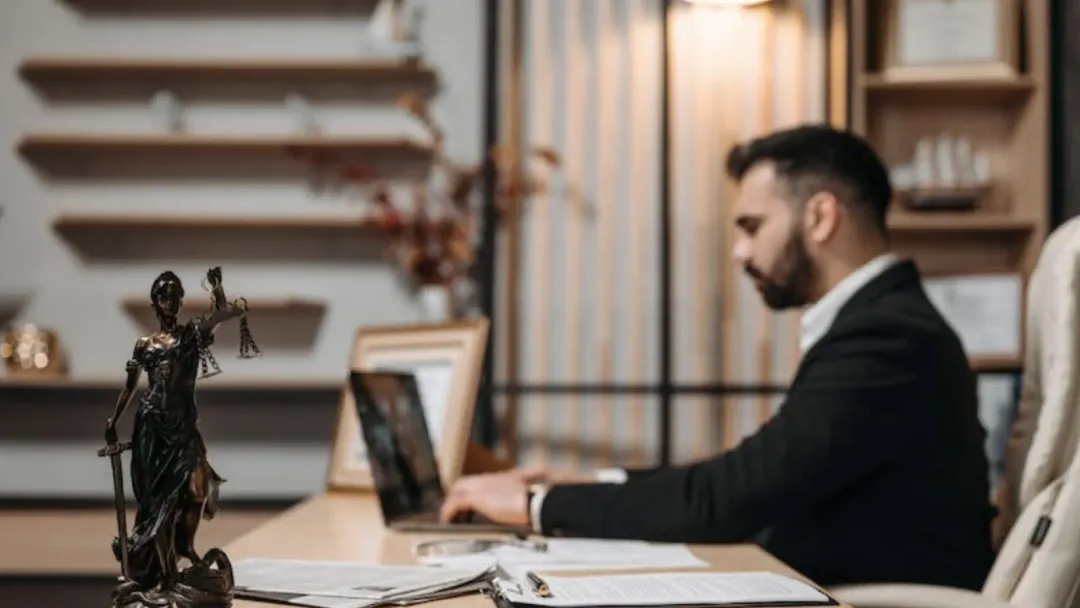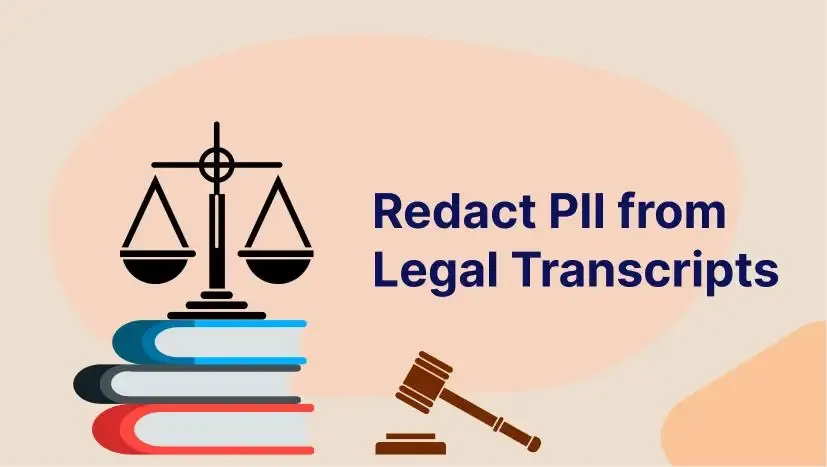Redaction in Criminal Investigation
July 2024
·
4 min read

Criminal investigators deal with a lot of digital evidence that needs to be handled carefully. Some of these footage contain sensitive information that needs to be edited out to protect the privacy of victims and suspects.
With numerous AI and manual redaction tools out there designed specifically to redact content within footage, deciding which one is the best or most trustworthy is no easy task.
One of the tools that many investigators trust and are using is Reduct. It’s designed to safely handle the footage to edit out sensitive content while following all the rules about handling this kind of material.
In this post, I’ll walk you through the process of redaction in criminal investigation and how Reduct can help you at each step from initial footage assessment to extracting redacted video exhibits to present in court.
Redaction for criminal investigation to ensure compliance:
HIPAA: The Privacy Rule of the Health Insurance Portability and Accountability Act (HIPAA) requires the redaction of protected health information (PHI).
GDPR: The General Data Protection Regulation (GDPR) is an EU regulation requiring personal identifiable information (PII) and health information to be kept private.
Reduct is fully compliant with these legal requirements, ensuring that sensitive information is appropriately redacted to mitigate the risk of unintentional disclosure.
Redaction for criminal investigation with Reduct
Reduct is a text-based audio and video redaction tool, meaning you can simply select the transcript text to redact parts of the audio or video evidence to make it admissible in court.
Reduct applies a secure blur in the area that needs to be redacted and is designed to be impossible to undo, so you do not have to worry about it being reversed or recovered.
The next step in understanding how to redact legal evidence and to identify exactly what information should be redacted, a tricky task when lengthy and complex footage is involved.
Step 1: Start by reviewing the footage with synced transcripts
The first thing you would do after receiving the footage as a criminal investigator is review it to identify sensitive information that needs to be redacted.
Reduct generates AI transcripts of the footage you feed into it within minutes. Here you can quickly skim through the transcripts to get context about the case.

As a criminal investigator, you know exactly where to focus within the footage. When you skim through a transcript, you can hone in on specific keywords. If you find a relevant word, clicking on it seamlessly navigates you to the exact point in the video.
- Chris Angles, Criminal Defense Attorney, The Angles Law Firm
Step 2: Choose and apply redaction within your evidence footage
After you receive the transcription from Reduct, you can highlight sections that need to be redacted or are important, and add notes to them.
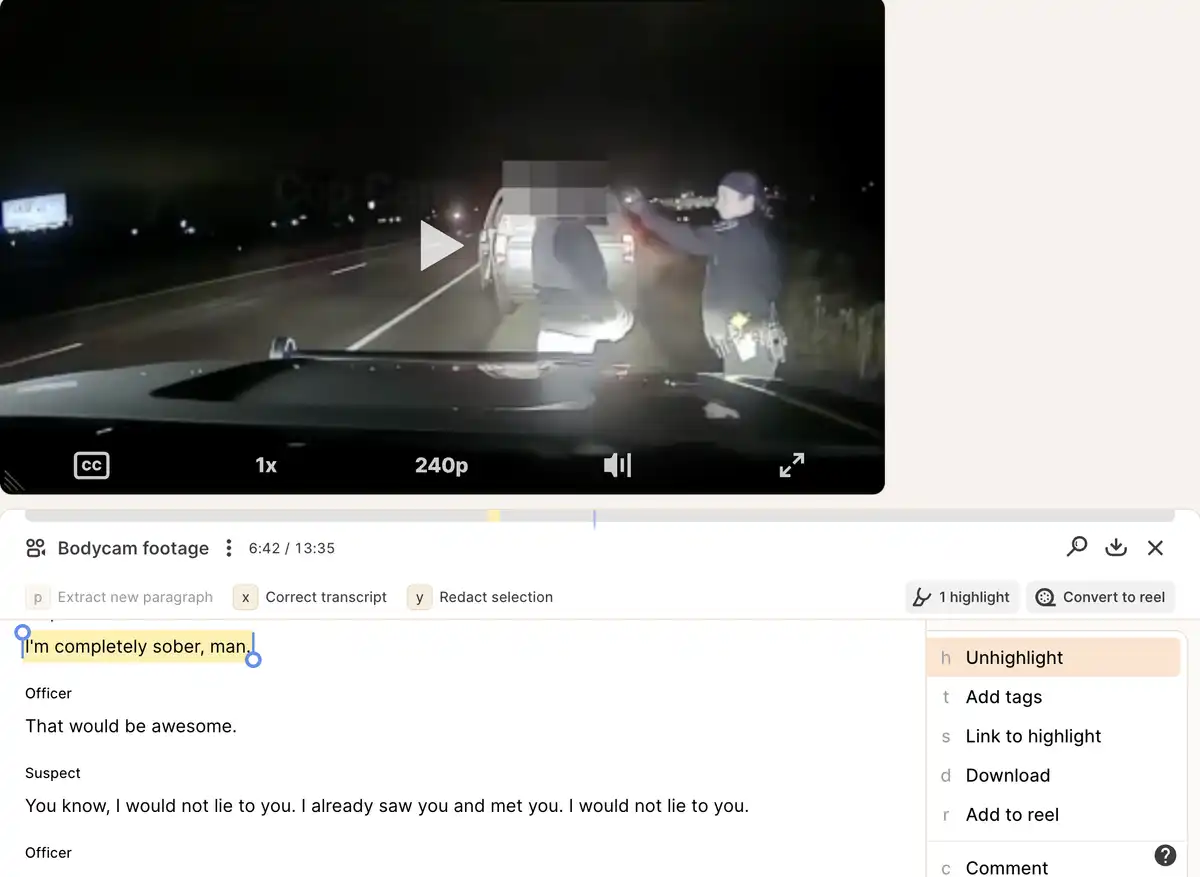
Or you can simply just select the text and identify the parts that need redaction within the footage.
Once these sections are identified, select the text and click on the 'redact' button, this gives you two options; 'blur video' or 'mute audio'. Depending on the type of footage you upload, click on the option that suits you the best.

If you select the ‘blur video’ option, a blur effect will appear on the screen, you can then adjust the effect to fully cover the faces or any personally identifiable information that needs to be hidden.
But if you select the ‘mute audio’ option, Reduct will automatically mute the audio for the selected text within the transcript and replace the transcript and caption with gray blocks.
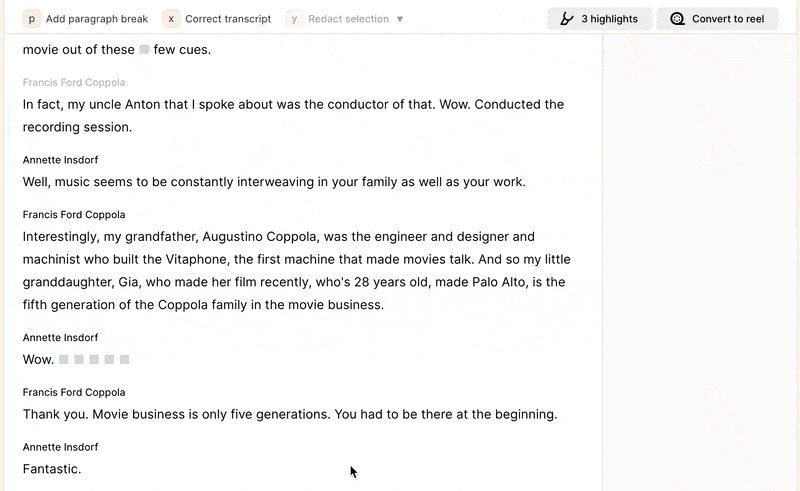
Step 3: Create a video exhibit with the redacted footage
During trial, you are required to submit only the key evidence from the footage for practical reasons. You can extract these redacted segments to submit as video exhibits in court.
Say you also want to compile multiple instances where the suspect confesses to a crime. You can select these specific statements from the footage and add them to ‘reel’.
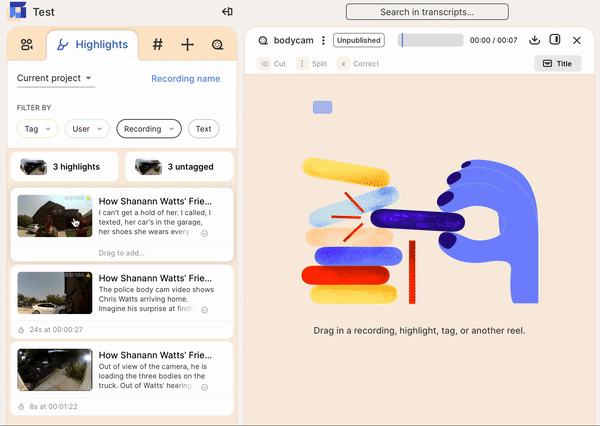
You can also add title slides as separators if you want each instance clearly separated.
Step 4: Export and present redacted footage in court
You can then download the redacted video exhibit in court-admissible formats. To download, select the downward arrow on the top-right corner and choose the format that meets your state or federal court specifications.
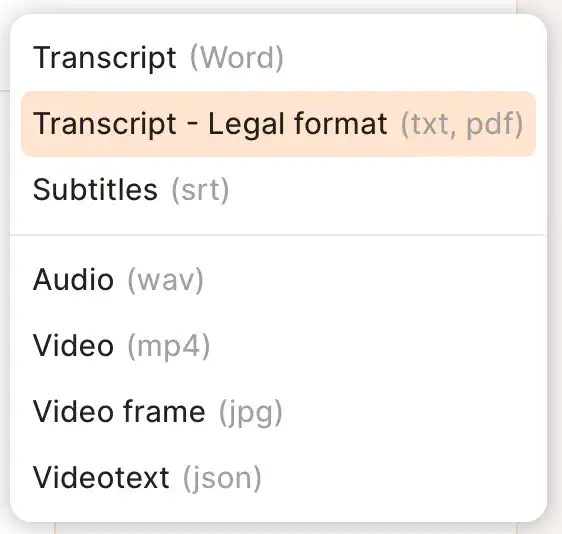
You can also download redacted transcripts with line numbers and exact timestamps for further review and analysis.
Present redacted evidence in court with confidence
As a criminal investigator, you need a reliable solution to help you adhere to strict redaction rules and regulations.
Reduct can help you at each step of the way from footage assessment to extraction of redacted, court-admissible video exhibits to present in court.
Get 30 days free pilot for your entire team. Redact unlimated footage today!
